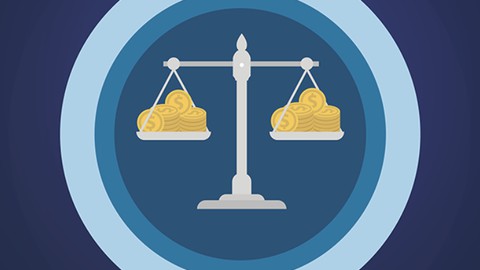
Marginal Costing & Break Even Point (BEP)
Marginal Costing & Break Even Point (BEP), available at $19.99, has an average rating of 4.4, with 13 lectures, based on 5 reviews, and has 18 subscribers.
You will learn about Concept of Marginal Costing & Break even Point (BEP) Calculation of P/V Ratio Case Studies on BEP Calculation of Product Mix using Marginal Costing This course is ideal for individuals who are Graduation Students, Management Students, MBA, BBA, Commerce students, Data Analytics students It is particularly useful for Graduation Students, Management Students, MBA, BBA, Commerce students, Data Analytics students.
Enroll now: Marginal Costing & Break Even Point (BEP)
Summary
Title: Marginal Costing & Break Even Point (BEP)
Price: $19.99
Average Rating: 4.4
Number of Lectures: 13
Number of Published Lectures: 13
Number of Curriculum Items: 13
Number of Published Curriculum Objects: 13
Original Price: ₹1,499
Quality Status: approved
Status: Live
What You Will Learn
- Concept of Marginal Costing & Break even Point (BEP)
- Calculation of P/V Ratio
- Case Studies on BEP
- Calculation of Product Mix using Marginal Costing
Who Should Attend
- Graduation Students, Management Students, MBA, BBA, Commerce students, Data Analytics students
Target Audiences
- Graduation Students, Management Students, MBA, BBA, Commerce students, Data Analytics students
Marginal costing is the accounting system in which variable costs are charged to cost units and fixed costs of the period are written off in full against the aggregate contribution. Marginal costing is also the principal costing technique used in decision making. The key reason for this is that the marginal costing approach allows management’s attention to be focused on the changes which result from the decision under consideration. The concept of marginal costing is based on the behaviour of costs that vary with the volume of output. Marginal costing is known as ‘variable costing’, in which only variable costs are accumulated and cost per unit is ascertained only on the basis of variable costs. A break-even point is the minimal accepted point for most businesses. Here, the total costs for a product or service and the total revenue that product or service have brought in are equal. Therefore, there is no profit nor any loss. This type of revenue is needed to cover the total fixed and variable expenses of the company for a specified time period.
To calculate the BEP in units:
BEP in Units = Fixed Costs / (Sales Price per Unit – Variable Cost per Unit)
To calculate the BEP in Dollars:
BEP in Rupees = Sales Price per Unit x BEP in Units
There are 3 factors in the breakeven calculation:
-
the sale price
-
the level of variable costs
-
the level of fixed costs
The breakeven point is reached when the margin on variable costs generated by the company equals the total amount of its fixed costs.
In this course, the students will learn:
-
Concept of Marginal Cost and Break Even Point
-
Marginal Cost Equation
-
Cases and Problems in Marginal Costing
-
Break Even Point (BEP) & Profit Volume Ratio (P/V Ratio)
-
Income Statement in Break Even Analysis
-
Indifference Point
Course Curriculum
Chapter 1: Introduction
Lecture 1: Introduction
Chapter 2: Marginal Costing Equation
Lecture 1: Marginal Cost Equation
Lecture 2: Marginal Cost Equation-Problem II
Lecture 3: Marginal Cost Equation-Problem III
Lecture 4: Marginal Cost Equation-Problem IV
Chapter 3: Break Even Analysis
Lecture 1: BEP-I
Lecture 2: BEP-II
Lecture 3: BEP-III
Lecture 4: BEP -IV
Lecture 5: BEP-V
Chapter 4: Break Even Point & P/V ratio
Lecture 1: Break Even Point & P/V ratio
Chapter 5: Income Statement & Break Even Analysis
Lecture 1: Income Statement & Break Even Analysis
Chapter 6: Indifference Point
Lecture 1: Indifference Point
Instructors
-
Dr.Himanshu Saxena
MANAGEMENT PROFESSIONAL (MBA,Ph.D, UGC NET,SET QUALIFIED)
Rating Distribution
- 1 stars: 0 votes
- 2 stars: 1 votes
- 3 stars: 0 votes
- 4 stars: 1 votes
- 5 stars: 3 votes
Frequently Asked Questions
How long do I have access to the course materials?
You can view and review the lecture materials indefinitely, like an on-demand channel.
Can I take my courses with me wherever I go?
Definitely! If you have an internet connection, courses on Udemy are available on any device at any time. If you don’t have an internet connection, some instructors also let their students download course lectures. That’s up to the instructor though, so make sure you get on their good side!
You may also like
- Best Emotional Intelligence Courses to Learn in March 2025
- Best Time Management Courses to Learn in March 2025
- Best Remote Work Strategies Courses to Learn in March 2025
- Best Freelancing Courses to Learn in March 2025
- Best E-commerce Strategies Courses to Learn in March 2025
- Best Personal Branding Courses to Learn in March 2025
- Best Stock Market Trading Courses to Learn in March 2025
- Best Real Estate Investing Courses to Learn in March 2025
- Best Financial Technology Courses to Learn in March 2025
- Best Agile Methodologies Courses to Learn in March 2025
- Best Project Management Courses to Learn in March 2025
- Best Leadership Skills Courses to Learn in March 2025
- Best Public Speaking Courses to Learn in March 2025
- Best Affiliate Marketing Courses to Learn in March 2025
- Best Email Marketing Courses to Learn in March 2025
- Best Social Media Management Courses to Learn in March 2025
- Best SEO Optimization Courses to Learn in March 2025
- Best Content Creation Courses to Learn in March 2025
- Best Game Development Courses to Learn in March 2025
- Best Software Testing Courses to Learn in March 2025






















